



La nostra storia
The fabrics, the clothes
The story of Lamberto Tastardi, a.k.a. “Luciano”, began in 1955; after studying with prof. Rossi since 1940 he worked as a ceramic decorator, with the best ceramic factories in Salerno, such as D’Agostino and Ernestine, and Musa in Vietri sul Mare, real pieces of italian ceramic history. In 1955, Luciano started his own business, “Creazioni Luciano”. He devoted himself to hand-painted fabrics, into which he transferred the decoration of ceramics, consisting of swift and definitive brushstrokes. He discovered a method of manual printing based on dipping moulds – which he made himself from tire tubes – into color, obtaining abstract fantasies. His curtains, exhibited at various industrial exhibitions as SAMIA and MITAM, catched the attention of the famous Italian architect Giò Ponti. He, believing in the work of Luciano, wrote a letter to Luciano from the editorial office of the important Italian art design magazine Domus, expressing appreciation for his work.
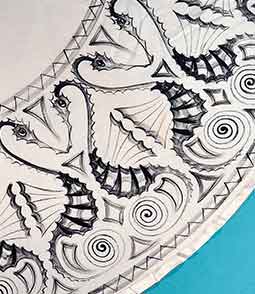
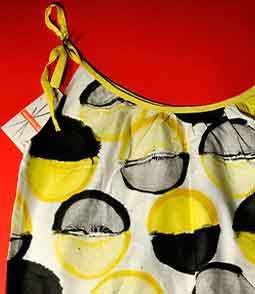
Thick-glaze ceramics
Thick-glaze ceramics are characterized by the use of a base body made with white clay or a refractory material, in order to overcome the significant expansion of the overlying glazed body; back then, the colours were directly applied onto the base body, followed by very thick vitreous glaze. The pieces, either in relief, engraved or flat, would feature a specific image or an abstract fantasy. The peculiarity of this ceramic process lies in the randomness of the glaze behaviour and colours during the firing, which caused smears and colour contaminations, that made each piece unique. This technique was soon abandoned due to the large number of by-products.

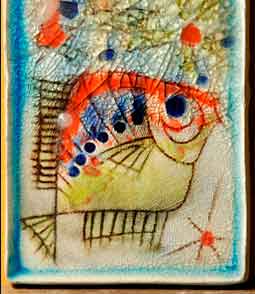
The “Maniera Nera”
The carved drawing reveals the true colour of the white body, starkly standing out against the homogeneous dark background, where the hard-enamel colour tones depict fantasy themes such as fork-tailed mermaids, fishes of the deep sea, or peacocks of Eastern inspiration.

The Ceramic Cloisonné
Luciano invented a new technique that recalls jewellery’s objects Cloisonné; this made him famous both in Italy and abroad. A relief drawing, into which the colour and the transparent glazes are hand-applied inside the closed cells of the design, lying perfectly flush after firing. The technique’s concept, apparently very similar to the stained glass one, uses white clay (not the red clay generally used in ceramics from Vietri sul Mare), that highlights the drawing and stands as the ideal basis to enhance the coloured vitreous enamels. His new technique offers an original view of the ideal world product of our local and traditional iconography: rural scenes, fishermen and Mediterranean houses. The Polish-German artist Irene Kowaliska, one of the first to work in Vietri as a ceramist, became a fan of Luciano’s new technique, to the point that she gave him a few pictures of her own ceramics for him to use as models.

… by Irene Kowaliska
“From 1940 until 1943, I reproduced her and Giò Ponti’s drawings for D’Agostino, from ’46 to ’50 for Ceramica Musa in Vietri, and from ’55 to ’60 in my own workshop for Miricae, a client of mine in via Frattina in Rome. In the ’60s and ’70s, she [Irene Kowaliska] was the supervisor for ENAPI [National Body for the Crafts and Small Industries] and she than came to visit me in my laboratory. She was amused by my new “in relief” decorative technique, which was born thanks to my love for stained glass and that I translated to ceramics using colored glazes; she especially liked the “Casette Mediterranee” [Mediterranean Houses] series, in the Moorish-Arabic style of the Amalfi coast. Once she saw them, she gave me photos of pieces from her own production for me, featuring the fairy-tale characters of her Sardinian-Vietri period, to reproduce with my new Cloisonné technique. She would later come back, happy to see the results in the new style…”
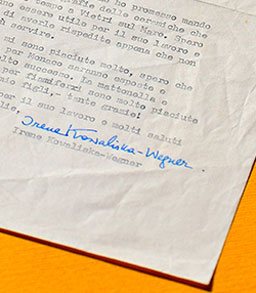

The large view tileworks.
After the coloured transparent glazes, the large view tileworks period came. This technique, similar to the previous, is further refined in the drawing and it uses matte colours and glazes, which confer to the pieces a satin finish. They depict, in limited edition, many Italian monuments, as real paintings in which the delicate pastel-toned nuances place them somewhere between art’s prints and eighteenth-century gouaches, revisited through ceramics.
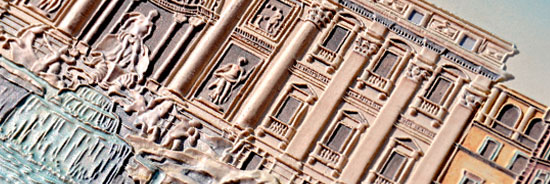
The legacy
Luciano Jr. and Roberto, sons of “Luciano”, keep this family tradition: the first dealing with management and the second dealing with the artistic aspect of the manufacture. Over more than 30 years, they enriched the production with significant innovations and thousands of new designs, ranging from simple souvenirs to new large and small tileworks. Besides the production of traditional artistic ceramics, they launched a new brand exclusively addressing the creation of high-quality ceramic tiles, “Tastardi Tiles”. Here, the same handcraft processes from the original production are brought into a new sector of ceramics, which thus becomes a natural modern extension of the tradition.
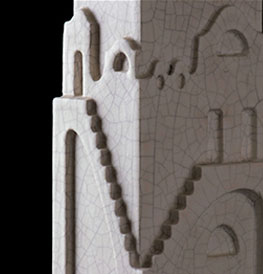

The prestige
Presentation video of the London 2012 Olympics broadcast worldwide: in the countdown there are the liberty numbers (number 13) made by Creazioni Luciano
